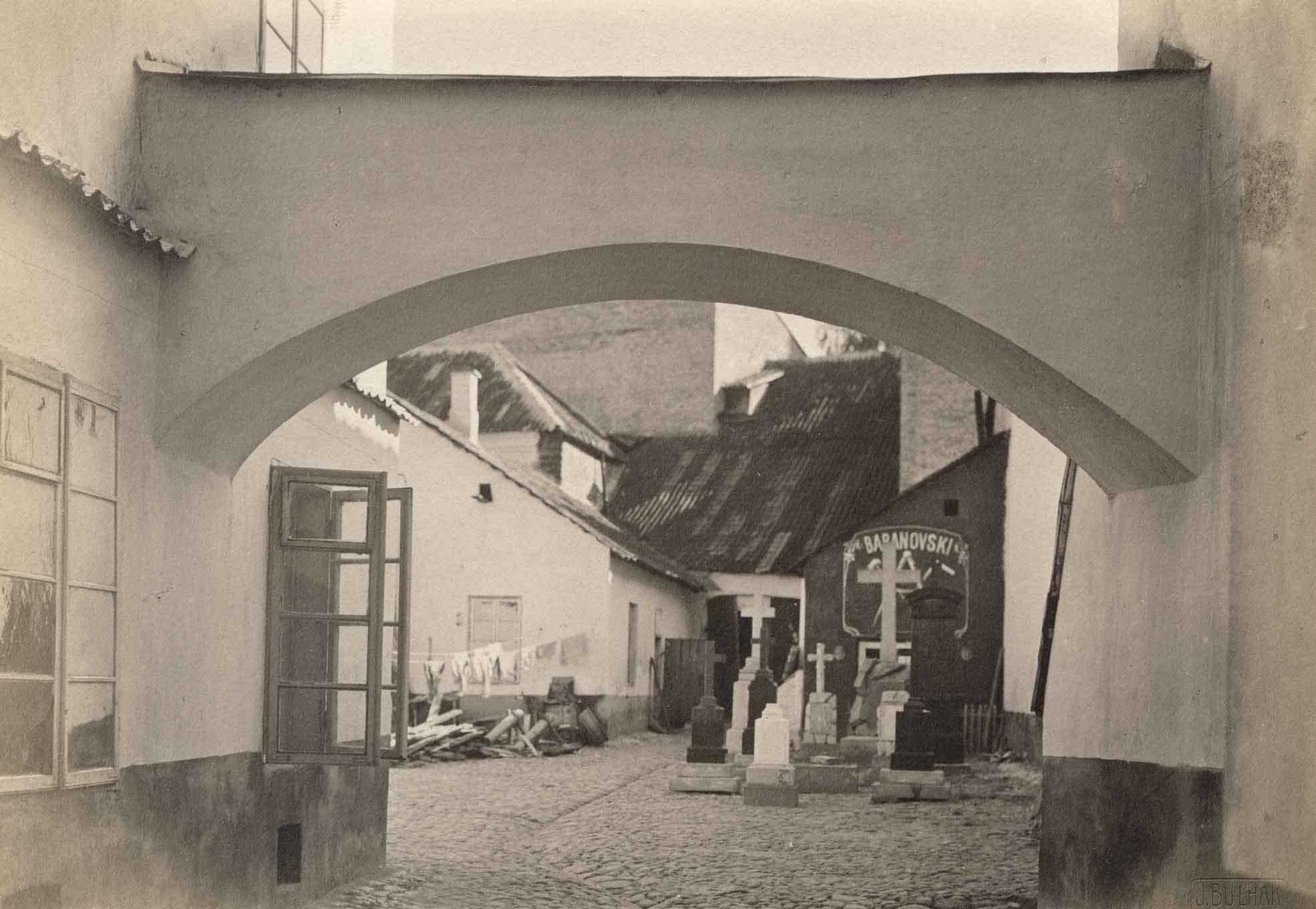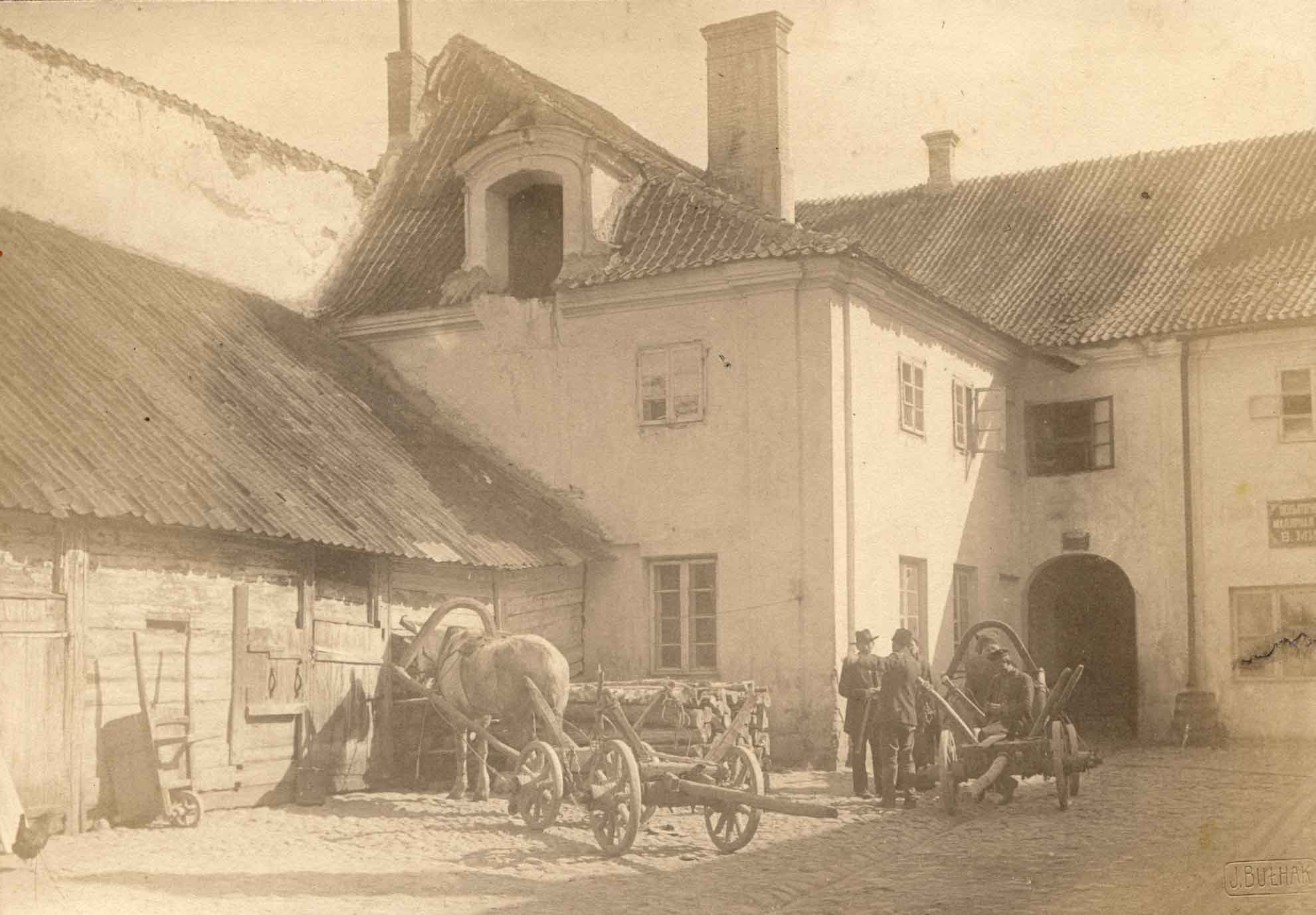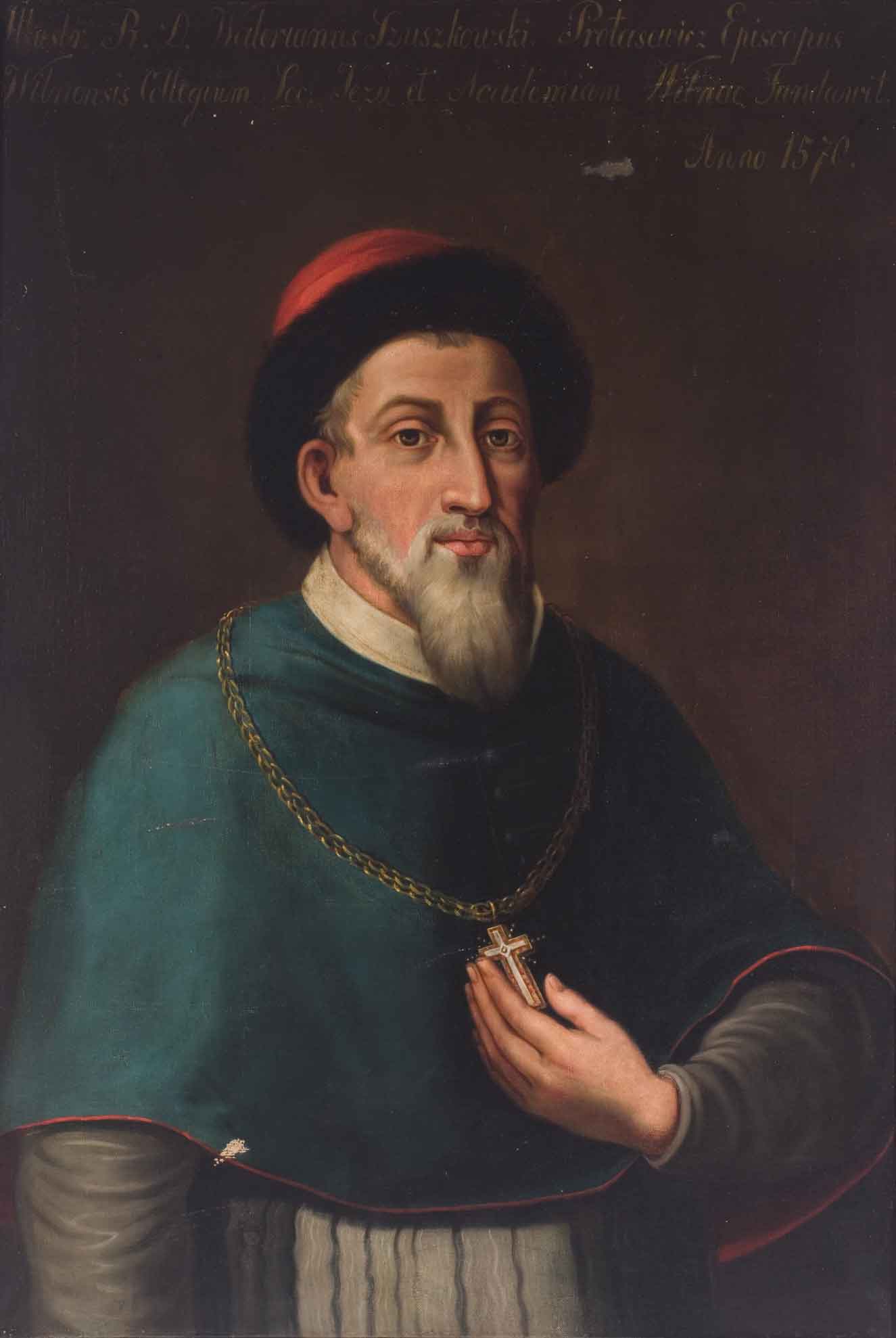10 Pilies Street

Photographer – Tomas Kapočius
10 Pilies Street. 2018
Lithuanian Art Museum
Eminent Lithuanian politicians, members of the clergy and cultural figures lived in this, one of the oldest buildings in the whole street, in the 16th–20th centuries. It is believed that the house was built by the Grand Chancellor of Lithuania Michał Radziwiłł. The Bishop of Vilnius Valerijonas Protasevičius acquired the building in 1575. After his death, the owners and inhabitants of the house that was left to the Vilnius Cathedral Chapter changed, the walls were damaged by numerous fires, it was left abandoned and derelict.
The building experienced something of a revival in the beginning of the 19th century when the canon Józef Konstantin Bogusławski moved in, known as a history aficionado and art collector. He saw to the major renovations of the building and decorated its interiors. The manor lord Pawel Engelhardt stayed there in 1828–1831 with his serf-servant Taras Shevchenko, who went on to become a famous Ukrainian writer. The poet Kazys Bradūnas lived here during the years of Nazi occupation, whilst studying at Vilnius University where he created his first verses. The legendary Lithuanian vaudeville singer Antanas Šabaniauskas lived here for half his life, from 1946 until his death.

Jan Bułhak (1876–1950)
Courtyard in Pilies Street. 1914
Lithuanian Art Museum

Jan Bułhak (1876–1950)
Cathedral Chapter courtyard in Pilies Street. 1912
Lithuanian Art Museum
Individuals

Unknown artist
Michał Radziwiłł (1470–1521). 1st half of the 17th century.
Oil on canvas
Lithuanian Art Museum

Unknown artist
Bishop Valerijonas Protasevičius (1504–1579). 18th century.
Oil on canvas
Lithuanian Art Museum

Ivan Kramskoj (1837–1887)
Portrait of Taras Shevchenko. 1876
Paper, soft lacquer
Lithuanian Art Museum
TARAS SHEVCHENKO (1814–1861)
A writer, artist and Ukrainian national revival figure. He was born into a family of serfs and served the manor lord Pawel Endgelhardt, whom he lived with in Vilnius at 10 Pilies Street in 1828–1831, studying art with the Vilnius University art professor Jan Rustem. In 1831 he and his master left for Saint Petersburg, where he bought his freedom with the help of other artists. From 1838 he studied at the Saint Petersburg Academy of Art and earned a free artist’s diploma. He travelled around Ukraine, collecting folklore and ethnographic material. From 1846 he lived in Kiev and belonged to the secret political Brotherhood of Cyril and Methodius, for which he was arrested, imprisoned and later deported. He settled in Saint Petersburg in 1857, where he wrote numerous works of poetry and prose, spreading national liberation ideas. Some poems became folk songs. His artistic legacy consists of over 800 works: portraits, landscapes, and mythological, historic and genre paintings.
KAZYS BRADŪNAS (1917–2009)
He was a Lithuanian poet, and a winner of the Lithuanian National Prize (1992) and the Poetry Spring (2002). He studied at Vytautas Magnus University, and when the Faculty of Humanities was transferred from Kaunas to Vilnius in 1940, he continued his studies in Vilnius, living at 10 Pilies Street. Bradūnas fled to Germany in 1944. In 1949 he moved to the United States, and settled in Baltimore, Chicago. He was active in Lithuanian émigré cultural activities, cooperating in the cultural press. He released poetry anthologies and compiled Lithuanian émigré literary studies. The poet’s first book, a collection of sonnets called Vilniaus varpai (Bells of Vilnius) was released as soon as he had completed his studies (it was printed illegally in Kaunas in 1943, without the permission of the occupant censors).
ANTANAS ŠABANIAUSKAS (1903–1987)
The singer was the pioneer of Lithuanian professional vaudeville singing. He performed the popular songs Spaudos baliaus valsas (Press Ball Waltz), Ruduo (Autumn), Žavingos akys (Beautiful Eyes), Paskutinis sekmadienis (The Last Sunday), and other songs. Šabaniauskas studied singing in Italy. Whilst living in Kaunas, he was an artist with the State Theatre and the Grand Theatre, singing in various collectives and appearing in concerts around Lithuania, also making solo appearances. In the inter-war years he recorded around 30 LPs in Kaunas, Copenhagen and London. Between 1946 and 1987 he lived at 10 Pilies Street in Vilnius and sang in the choir of the State Opera and Ballet Theatre, the State Philharmonic and in amateur choirs. In 1960 he was dismissed from the Philharmonic choir for ideological reasons and did not sing in public for over a decade. He returned to the stage in 1972, organising concert programs in restaurants in Vilnius, Palanga and Druskininkai.

